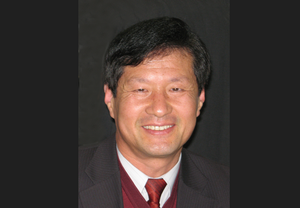ITER in Korea
Korea is a country rather poor in domestic energy resources. More than 97 percent of the country's energy needs are imported, and the amount of energy required is increasing fast. So Korea is eagerly looking for alternatives such as a commercial fusion reactor. The ratification of the ITER Agreement in Korea is expected around February 2007, after which the Korean Domestic Agency can be established before summer. Where this agency will be is not yet officially decided, but it will most probably be in Daejeon, a city about 140 kilometres away from Seoul. The Domestic Agency would probably be the National Fusion Research Centre (NFRC).
On the verge of the ITER signing ceremony in Paris on November 21, ITER-Newsline talked to Ki-Jung Jung, Participant Team Leader of the Korean party about the present situation and the meaning of the ITER project to his country.
Mr. Jung, what does the signing of the ITER agreement mean to you and your country?
The fact that the Deputy Minster signed this agreement shows that this project is very meaningful to us. You see, Korea is a country that is really poor in regards to energy resources. Almost 97 percent of our energy is imported. So Korea is eager to realize a nuclear fusion reactor to replace nuclear energy one day. This is our final goal. From my personal point of view: I think, this is the second era for fusion energy. This is the starting point for the commercialisation of fusion for the future.
What will be the next steps? Has there been a domestic agency founded yet?
Not yet. There is no domestic agency yet. We hope to get the ratification from the National Assembly before February 2007, so that we can open up the domestic agency before summer 2007. Where this agency will be is not yet officially decided, but it will most probably be in Daejeon, a city about 140 kilometres away from Seoul. The name of the agency will be the National Fusion Research Centre (NFRC).
How many institutes are there involved in fusion research in your country?
The NFRC will be unique. But there are about further 35 to 40 national research centres, more than 25 private research centres and also some universities who do some research on fusion. And there is the Korean Centre for Science and Technology, an education centre of the highest level. They also do research on nuclear fusion energy, as well as the Korean Atomic Energy Agency where they study test blanket modules and heating devices for example.
Is it possible to say how much of the scientific R&D budget is spent on fusion in Korea?
This year we spent USD 10 million, next year it will probably be USD 40 million. The sharp increase is mainly due to ITER. In general, the increase of a budget is limited to 10 percent per year. For fusion, we don't have this limitation. This is because the amount of money needed for ITER is so sharply increasing.
Is there much interest in students or young engineers in fusion research?
For Korea, fusion is quite a new area. At the moment, we experience a lack of manpower, but we hope this will change with the ITER project. Within this project we participate in developing frontier technologies like the toroidal field conductor, the vacuum vessel, diagnostics and many more. Based on the knowledge gained from this project and our own national project KSTAR, we hope to be able to build a commercial fusion reactor one day.


